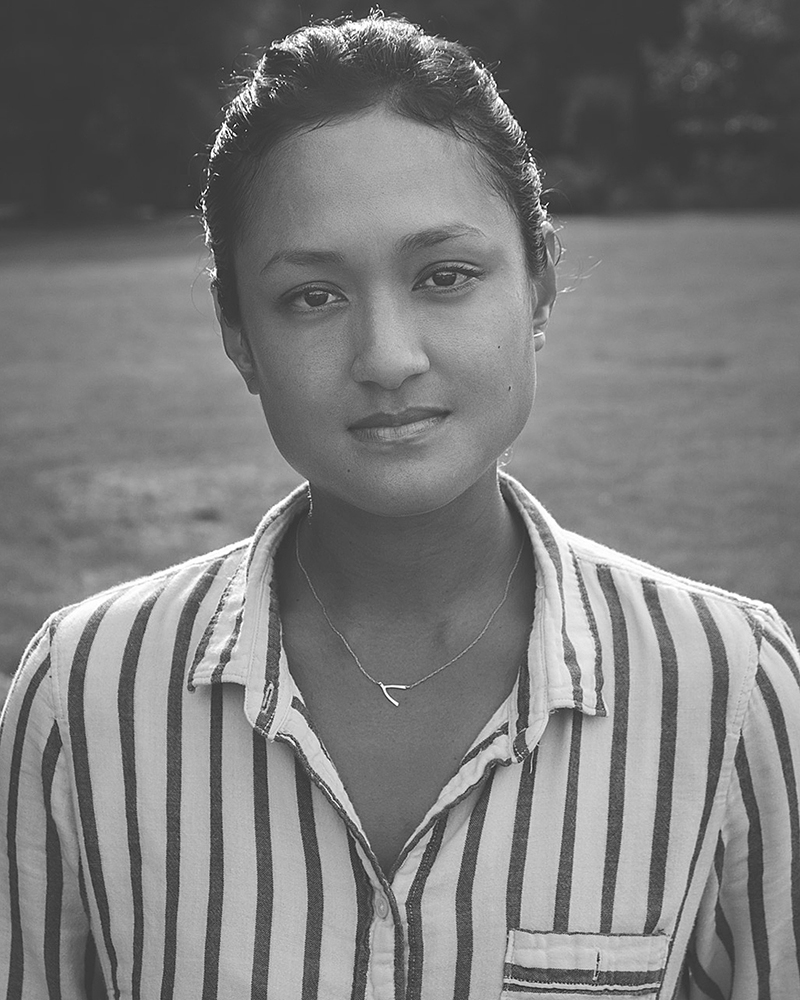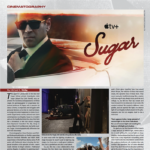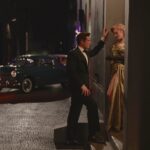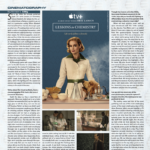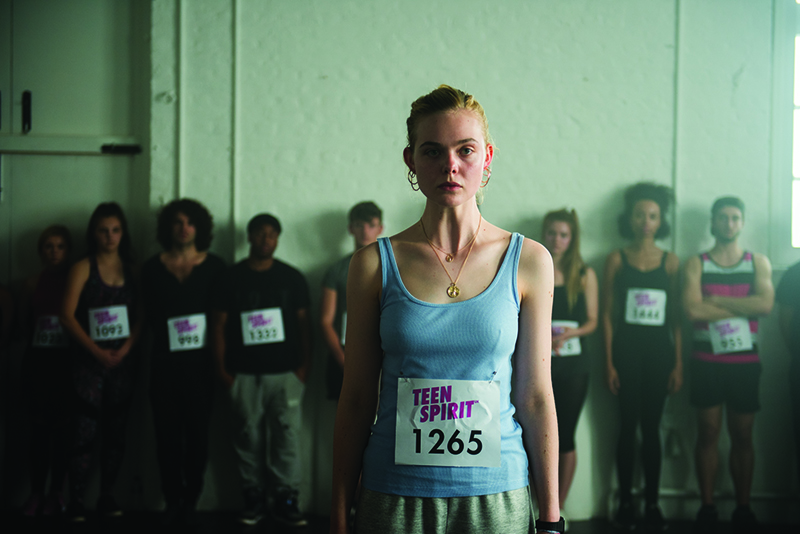
DP Autumn Durald Arkapaw Talks Cinema Lighting
Take a 17-year-old teenager from the Isle of Wight, one whose self-esteem issues and shyness show in her downcast eyes, hidden behind unruly hair. Plunge her into the fast-paced reality show world of a national singing competition. Give her an unlikely mentor, a harsh but loving mother, an absent father, and vocal power with the potential to rocket her to stardom.
What have you got? The answer is Teen Spirit, a Bleecker Street film written and directed by Max Minghella, opening in the U.S. on April 5 and already burning up the movie trailer sites with buzz that began with its Toronto International Film Festival debut last fall. The excitement surrounds the casting of Elle Fanning as the introverted Violet Valenski, whose fierce independence and magnetic performances pull her out of her shell as the story unfolds.
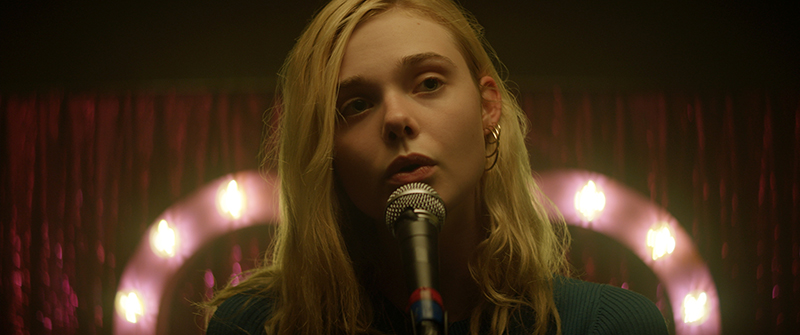
Into the Spotlight
This may all sound like a story you’ve heard before, but the form of the film breaks away from the formulaic. Violet’s working-class existence seems bathed in shadowy watercolors, whether she’s outside tending to her family’s livestock in a grassy field as clouds scuttle overhead, or haunting smoky nightclubs half-lit in warm tungsten for the chance to sing on a tiny stage. Daring to have expectations and dreams, she takes a deep dive out of her comfort zone to audition for Teen Spirit, a British Idol-style competition that pits her against far flashier and more experienced performers. The film reveals her progress slowly, moving her out of the shadows and into the haze of auditions, until she finally reaches the bright light of television cameras and a national stage.
This series of visual transformations is handled with great finesse by Autumn Durald Arkapaw, director of photography (billed as Autumn Durald). Named one of ten “Cinematographers to Watch” by Variety, her credits include the feature films Palo Alto, One and Two, the upcoming The Sun Is Also a Star, and a number of commercials, short films and music videos. Durald worked closely with production designer Kave Quinn and director Minghella to achieve the progressive transitions, from Violet’s claustrophobic home life to her breakaway into the national spotlight.
“I like a more stylized world, even when shooting a naturalistic story,” Durald said by phone from Los Angeles. “The naturalism is more stylized in this film. The home world has an analog feel with the lighting choices, as opposed to the more vibrant, digital lighting when she reaches London. There were many discussions with the director about how the world should feel.”
Sodium vapor light streaming in the windows of the bar where Violet meets her mentor, a former opera singer named Vlad, creates a sense of realism even as the orangey tungsten light inside brings warmth to faces and to the murky atmosphere. “The lighting is coming from the street, it makes sense,” Durald said. “In her local bar, there’s a lot of sodium vapor streaming in when Vlad first sees her. You have these stylized touches alluding to the elevated world that we’re eventually going to take you into. The same idea with her home life — the sunlight and sodium vapor streaks through the kitchen.”
Soon Violet decides to audition for Teen Spirit, when the show’s talent search makes a first-ever trip to the Isle of Wight. Violet finds herself in a crowd of auditionees, learning dance combinations and working her way through each confusing phase of the process. The whirlwind of activity is made all the more daunting by a sense of haze over the proceedings, emphasizing the stark whiteness of the room and the constant flux of events.
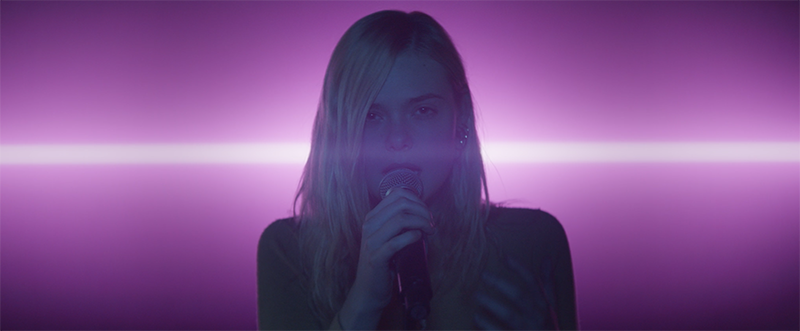
Lens and Haze Choices
“It has a lot to do with lens choice,” said Durald. “I do like to use a lot of haze. When haze is used and the lens is shooting into the daylight, it can really accentuate the lens flare and make the image more washed out, so that’s what you’re seeing happening.”
Durald shot this film using an Arri Alexa Mini camera, and the magic lens she described is one of the Panavision C series Anamorphic Prime lenses, providing a graduated depth of field and a pronounced anamorphic flare, as well as a bokeh effect — the way the lens renders points of light outside of the central focus, sometimes fracturing them into straight lines across the screen.
“They’re vintage lenses, and they’re very flary,” she said. “You get a lot of light streaming into the iris, making the image more milky. It can be a very romanticized look. She’s stepping into a new world there.”
The space itself provided part of the ambiance — the spare look of a rehearsal hall with its pale walls and general lack of comforting features. “The space is a white box,” said Durald. “To be honest, not my favorite thing to shoot, but Max loved the white. It makes sense it was a white space, that’s how a rehearsal studio looks. I ended up liking how that turned out.”
After a day of auditions narrows the field of competitors, Violet takes the stage in a darkened audition space with the judges shrouded in darkness some distance away, a tiny sliver of light making their table barely visible. Alone in the spotlight in front of a star drop, she begins to sing “Dancing On My Own,” a song popularized by pop star Robyn — and the screen erupts in a montage of image fragments that contrast her daily life with what may be to come.
“Max is pretty clear as far as his love for pop music and how he wanted those scenes to feel; so he definitely knew what he wanted,” said Durald. “We shot all those little pieces just as he described them in the script, and when the video montage was cut to this music, they developed into their own special sequences. He had an agenda for this first montage when she’s auditioning — she’s apprehensive, and a bit nervous on stage — and then we cut to all these other moments of home life that help allude to her future success.”
Durald took the very specific direction from Minghella and brought all of these tiny scenes to life. “We’re really good friends, Max and I, and we had been talking about the film for a while, he was always sending me images,” she said. “Once you’re in prep and you see the right space, it just feels perfect for the story. In the theater, where Violet first auditions, there’s some red curtains, judges in darkness, and you see this shaft of light streaming through the back door. That setup was a favorite of mine. It was fun finding those unique spaces. It’s not a big-budget film, but we had great locations, and every head of department on the film had such amazing taste.”
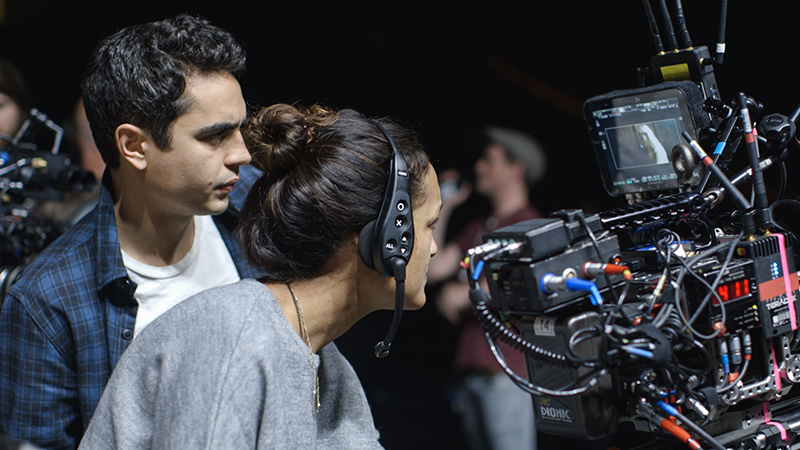
The London Segment
When Violet heads to London, the small, stuffy spaces vanish as her environment changes and her world view broadens. “The road to London, you want to see more, it’s not as claustrophobic,” said Durald. “It feels more expansive. We should see her more clearly, and how demure she is within the London atmosphere.”
Much as they would have loved to see Violet bathed in sunlight, however, London’s legendary overcast skies and fog persisted. “The director actually hates that, the London fog,” she said. “We shot in the summer, so you see sun in some of the Isle of Wight stuff, and in London, we got lucky sometimes. We weren’t trying to embrace the foggy sky.”
The team selected the more than 1 million-square-foot ExCeL London as the location of the big competition, giving the director and DP virtually unlimited options for smaller locations. Most notably, they chose a series of corridors through which Violet makes her way to the stage for her biggest performance, using a single, long tracking shot focused on her determined face.
“Her journey to the stage was in the script, but it evolved into a longer Steadicam shot based off of the location,” said Durald. “Max had something in his head that he wanted specifically. Essentially, you need to find a space where you have the texture that you need as well as the logistics. There was a lot of scouting as to where that hall would be, so we had a lot of backstage access and looked at all options. But there’s actually one cut in there, so when she walks down that really long hallway, you see her go into black towards the end — that’s the cut — and then she exits into the backstage. It’s a Steadicam shot, and we timed it out, eventually picking up the pace a bit, because we had to think about how long people would want to sit through a shot like that. At the end of the day, we embraced it.”
Long tracking shots are notorious in the movie business: They’re hard to get right, often take days of rehearsal and dozens of takes, and sometimes get scrapped altogether. This one, however, came together fairly smoothly. “We did it a lot of times — like eight takes,” she said. “My Steadicam operator is very good. He takes things pretty seriously, and wants to execute them really well, as do Max and I. We do it until we get it perfect. Elle also just delivers right off the bat, so if we’re doing it again, it’s for us, not because of her.”
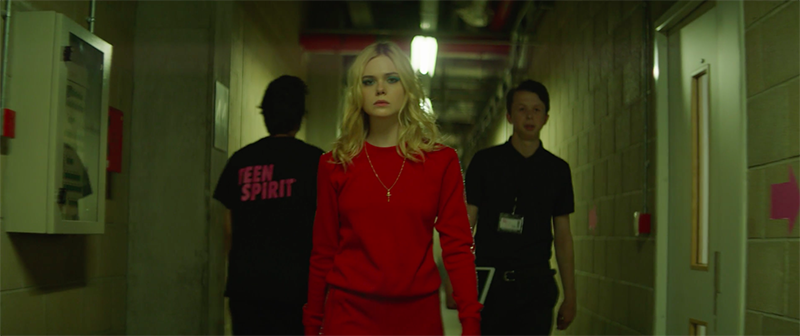
The Big Moment Arrives
After that long walk, the moment we’ve been waiting for finally arrives: Violet and her band take the stage and bring their all to her big performance. Here the visuals not only need to provide viewers with an authentic live music experience, but they need to match the energy and quality of Fanning’s own performance.
To achieve this, Quinn brought in SXS, a production company that produces big music events, to handle the staging. “I had PAR cans above her, a reference I got from a Kanye West show I loved that he did in Glastonbury,” said Durald. “You can see all those lights above her flashing on and off in the wide Steadicam shots. My gaffer, Jonny Franklin, and I worked with the SXS programmer, and he made sure that each unit was turning off and on when we wanted.” Video screens behind the band supply a rapid-fire series of images and abstracts chosen by Durald, building excitement as the cameras capture Fanning’s electric stage presence.
“The day we shot her performance, we had limited audience members, so we had to cheat some stuff,” Durald said. “She’s bringing so much energy to the stage, so you don’t want to shoot it a million times, and each time she’s doing it, she’s killing it. Every take she gave us something special.”
Several cameras were in play to capture shots of Fanning, the band, and wider shots of the stage and the first few rows of the house. A camera operator on a crane gathered moving shots of the band members to amp up the already high intensity. “There’s a lot of energy Elle had on stage, and then there’s a second camera getting her through the audience,” said Durald. “There were a couple lens changes, but it’s really about the energy in the wide. As far as Steadicam, we knew what the language of our film was at that point. The camera movement does a really good job of taking you there, and feeling like you’re with her.”
Does she win? For that, you’ll have to see the film, but that won’t be a hardship. The story itself may not be unique, but Fanning’s ability to capture an audience, coupled with the overall artistic quality of the visuals, make this a small film with big potential.
“It’s a narrative film, but within the movie are also three music videos,” said Durald. “There’s a lot of prep going into that that isn’t even under my department. The music department, the training that Elle did, the choreography. It’s a really great culmination of all our amazing departments. It’s not a big budget film, but it feels big; everyone involved really cared, and it shows. When you pick wisely on projects and your leader gets really good people, it makes a world of difference. This film satisfies an audience who loves the music video vibe, but also a naturalistic, character-driven story.”
